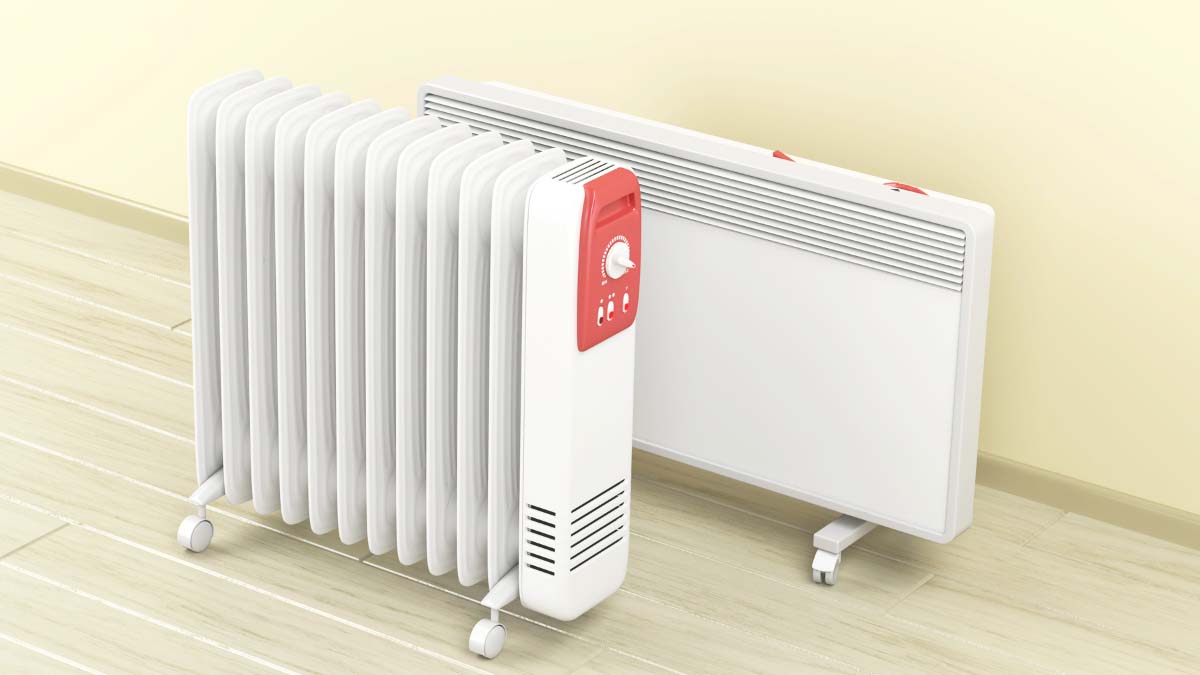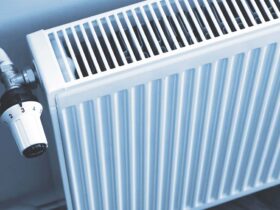Mineral oil is commonly used in oil for oil filled radiator due to its high boiling point and electrical resistivity. This oil is a thermal fluid, ensuring efficient heating and stable performance.
An oil-filled radiator is a type of heater that offers a reliable and efficient way to warm up a room. These heaters are filled with oil, which is heated by an internal element and circulates throughout the fins, releasing warmth into the air.
The oil acts as a heat reservoir, allowing the radiator to continue providing heat even after the element turns off, ensuring a steady temperature in your space. Unlike traditional radiators, oil-filled models are portable and often come with adjustable thermostats and multiple heat settings to tailor your heating needs. They are particularly popular for their quiet operation and long-lasting heat, making them a smart choice for both home and office environments. Designed for safety and convenience, oil-filled radiators provide an effective heating solution without the risk of open flames or carbon monoxide emissions.
Introduction To Oil Filled Radiators
Imagine a cozy, warm room on a chilly day. That comfort often comes from oil filled radiators. These heaters are favorites in many homes. They’re known for consistent warmth. They are also safe and energy-efficient. Now, let’s dive into how they work and their benefits.
The Basics Of How They Work
Oil filled radiators work simple but effectively. They are sealed units. They have diathermic oil inside. When you turn the radiator on, electricity heats the oil. The heat then spreads through the metal walls. This process creates a warm and gentle air flow in your room.
Unlike other heaters, they don’t burn oil. The oil acts as a heat reservoir. It keeps your room warm long after the heater is off. This means lower electricity use and more savings.

Benefits Of Using Oil Filled Radiators
Oil filled radiators offer a plethora of advantages for users.
- Energy Efficiency: They convert almost all electricity into heat. This trait makes them economical over time.
- Quiet Operation: They work in silence. This feature makes them perfect for bedrooms or study rooms.
- Consistent Heat: The oil stays warm. It means they can heat a room for a longer period with less power.
- No Dry Air: They don’t reduce humidity or oxygen levels. Your room’s air stays comfortable.
- Safe to Use: Their surface doesn’t get as hot as other heaters. This fact reduces the risk of burns.
- Portable: Many models have wheels. You can move them easily from one room to another.
In short, oil filled radiators are a smart choice for sustainable, comfortable, and safe heating. They are ideal for long-term use. They also suit various room sizes. Stay tuned to learn more about picking the right oil for your radiator!
Types Of Oil In Radiators
Understanding what goes inside your oil filled radiator can make a big difference in its effectiveness and lifespan. What oils are best? This essential part of the heating puzzle deserves a closer look.
Commonly Used Oils
Mineral oil often tops the list of oils in radiators. It’s known for its stability and safety. Some devices use synthetic oils. These man-made options offer excellent heat transfer capabilities. Diatomaceous earth oil stands out with its eco-friendly composition and high boiling point. Each type of oil impacts the radiator’s heat distribution in unique ways.
- Mineral Oil – High boiling point, non-conductive, widely available
- Synthetic Oils – Improved thermal efficiency, lower viscosity
- Diatomaceous Earth Oil – Natural, high heat retention, biodegradable
Impact On Heating Performance
The oil’s role is crucial in deciding how well a radiator performs. Better thermal conductivity means your room heats up faster. Viscosity determines how easily the oil flows around the coils. Lower viscosity oils generally heat up quicker and distribute heat more evenly.
| Type of Oil | Thermal Conductivity | Viscosity |
| Mineral Oil | Good | Medium to High |
| Synthetic Oils | Excellent | Low to Medium |
| Diatomaceous Earth Oil | Varies | Medium |
Selecting the right oil for your radiator not only affects how quickly your space warms up but also how long the device runs efficiently. Understanding the types of oils guides you in maintenance and can influence your choice at purchase.

Evaluating Oil Quality
Choosing the right oil for an oil-filled radiator is crucial. The oil’s quality impacts the radiator’s efficiency and lifespan. It ensures consistent heat output. Good oil quality matters for safety, too. Let’s dive into what makes oil high-quality.
Viscosity and Its Importance
Viscosity And Its Importance
Viscosity measures how thick the oil is.
It’s key to an oil’s performance in a radiator. The right viscosity ensures the oil flows smoothly. It helps distribute heat evenly. Below, see how viscosity levels affect an oil-filled radiator:
- Low viscosity: The oil heats up and flows quickly. It can cause uneven heating if too low.
- High viscosity: The oil is thick. It can slow down heat transfer. Ensures long-lasting warmth though.
The ideal oil has a balanced viscosity. It suits the radiator’s design. It helps maintain optimal heat transfer.
Additives for Enhanced Performance
Additives For Enhanced Performance
Oils can include additives for better performance. These substances protect and improve oil functions.
| Additive | Function |
| Anti-oxidants | Prevent oil breakdown. |
| Corrosion inhibitors | Stop rust inside the radiator. |
| Detergents | Clean internal parts. |
| Dispersants | Keep contaminants apart. Prevent sludge. |
An oil with these additives lasts longer. It reduces wear and tear on the radiator. Your appliance performs better over time with enhanced oils.

Frequency Of Oil Change
The health of your oil-filled radiator largely depends on the quality and condition of the oil within it. Understanding the frequency of oil change is critical to maintaining your heating appliance for longevity and performance. While these devices require less frequent maintenance than other heaters, it’s still essential to recognize the signs that indicate a need for oil replacement.
Signs Your Radiator Needs New Oil
Diminished heat output is a telltale sign that your radiator might need fresh oil. If your unit is no longer warming up as efficiently or uniformly as before, consider checking the oil. Noises or odd sounds coming from the radiator also hint at internal issues. Leakage is a critical sign. If you notice any oil on the floor around the radiator, this indicates a problem that requires immediate attention.
Maintenance Schedule For Optimal Efficiency
Maintaining an oil-filled radiator involves following a regular maintenance schedule. Generally, the oil in these radiators does not need replacing since it serves as a heat reservoir rather than fuel. However, proper annual inspections are crucial. Check for any signs of wear, damage, and the effectiveness of the heating before winter arrives. If you identify any issues during inspection, seek professional advice on whether an oil change or radiator repair is necessary.
- Visually inspect the heater annually
- Listen for unusual sounds when the heater is on
- Feel the surface to ensure consistent heating
- Check for leaks or damage to the heater body
Steps To Change The Oil
Changing the oil in an oil-filled radiator keeps your unit running efficiently. Regular maintenance extends the life of your heater. Learn how to change the oil step-by-step below.
Preparing The Work Area
Set up a clean, flat surface near your radiator. Area must be well-ventilated. Cover the floor with old newspapers or cloth to catch any drips or spills.
- Turn off the radiator.
- Unplug the unit from the wall socket.
- Allow the radiator to cool completely.
- Collect necessary tools: wrench, funnel, oil container, gloves.
Procedural Walkthrough
- Locate the oil plug on the bottom or side of the radiator.
- Place the oil container beneath the plug to catch the oil.
- Using the wrench, slowly remove the plug. Be careful to avoid any hot oil.
- Allow the old oil to drain completely into the container.
- Clean the plug area with a rag to remove any residue.
- Refill with the new oil using a funnel to prevent spills. Fill to the recommended level.
- Replace the plug securely to prevent leaks.
- Wipe down the radiator to clean any oil splatters.
Dispose of the old oil properly. Check for leaks by running the heater for a short period.
Troubleshooting Common Oil Issues
Keeping your oil-filled radiator running smoothly is important for cozy homes. Oil issues can cause trouble. Let’s fix them together!
Overcoming Sub-optimal Heat Output
Is your oil-filled radiator not warming up properly? Common problems often have simple fixes:
- Check the thermostat. It may need adjusting to a higher setting.
- Inspect the power source. A faulty socket could be the culprit.
- Review the oil level. Low oil might mean it’s time for a refill.
- Examine for dust build-up. Clean the fins for better heat circulation.
Addressing Leaks And Contamination
Found a leak or dirt in your heater? Here’s how to tackle these issues:
- Power off your unit. Safety comes first.
- Locate the leak. Search around seams or the oil tank.
- Clean up spills. Use rags to keep oil off floors and walls.
- Seal the leak. With radiator-safe sealant, cover the puncture.
Contamination calls for a clean-up. Dust or debris inside can mess with heat. Vacuum the heater’s exterior. Wipe clean with a damp cloth.

Energy Efficiency Tips
Keeping your home cozy doesn’t have to mean a spike in your energy bills. Smart use of your oil-filled radiator can ensure you stay warm efficiently. Below, discover how fine-tuning settings and positioning can save energy and keep costs down.
Optimizing Thermostat Settings
Getting your thermostat settings right is crucial for energy savings. Aim for a comfortable temperature that doesn’t overheat your space. A setting between 68 to 70 degrees Fahrenheit often strikes the perfect balance. Remember, lowering the thermostat by even a few degrees can lead to significant energy savings.
- Set lower temperatures for nighttime or when away.
- Use a programmable thermostat for consistent temperature control.
- Regularly check and adjust to avoid unnecessary heating.
Strategic Placement Of The Radiator
The location of your oil-filled radiator can impact its efficiency. Placing it in a drafty corner might mean it works overtime. Try these tips:
- Position the radiator centrally for even heat distribution.
- Avoid obstructions like furniture that can block heat flow.
- Close doors to keep warmth in designated areas.
Maximize the radiator’s potential by reflecting heat back into the room. You can do this by placing reflective insulation panels behind it. This simple trick minimizes heat loss through walls.
Complimentary Practices For Heating
Smart homeowners know, a cozy winter involves more than just cranking up your oil-filled radiator. Combine clever tricks to stay warm without a chill in your budget. We call these ‘Complimentary Practices for Heating’.
Insulation Enhancements
Kicking off with Insulation Enhancements, it’s the unsung hero of cozy homes. Proper insulation keeps the heat in and the cold out.
- Seal windows and doors: Dodge drafts and keep warmth snug inside.
- Thick curtains: Dress windows in layers to trap heat effectively.
- Insulation rolls for attics: A warm hat for your house, keeping heat from escaping up top.
Integrating With Other Heating Systems
Next, we have Integrating with Other Heating Systems. Your oil-filled radiator can join forces with other systems for the ultimate warm front.
- Programmable Thermostat: Sync timings with other heaters for an efficient, automated home.
- Convection heaters: Team up with these for instant warmth in well-used spaces.
- Baseboard heaters: Operate these on lower settings in harmony with your radiator for even heat distribution.
Future Of Oil Filled Radiators
The era of oil filled radiators continues to evolve with advancements expected to address modern energy concerns. Innovations in oil technology and trends toward eco-friendly alternatives promise a fascinating future for these reliable heat sources. As manufacturers innovate, consumers will find oil filled radiators becoming more efficient and environmentally conscious.
Innovations In Oil Technology
The latest oil technologies are revolutionizing traditional heating methods. Manufacturers are relentlessly pursuing oils that heat up faster and retain warmth longer. This means future oil filled radiators could become much more energy efficient.
- Synthetic oils are emerging, outperforming traditional mineral oils in both heat retention and overall efficiency.
- Biodegradable oils assure a lesser environmental footprint while maintaining superior heat distribution characteristics.
Breakthroughs in oil viscosity enable quicker heating with less energy. The potential for smart oil blends that can adjust viscosity based on room temperature is also on the horizon.
Trends Towards Eco-friendly Alternatives
The push for green alternatives drives the next wave in oil filled radiator technology. New models focus on sustainability, without compromise on comfort.
- Renewable energy compatibility allows oil filled radiators to operate on solar or wind power, dramatically reducing carbon footprints.
- Enhanced designs feature recyclable materials, further affirming the commitment to eco-friendliness.
- Thermostat precision ensures no energy is wasted, heating rooms to the desired temperature and not a degree more.
Anticipate the integration of smart technologies, harnessing IoT for efficient operation. Users could remotely adjust settings, optimizing energy use and minimizing waste.
Frequently Asked Questions Of Oil For Oil Filled Radiator
What Oil Is Used In An Oil-filled Radiator?
An oil-filled radiator typically uses mineral oil as a heat reservoir. This oil circulates inside the radiator’s sealed system, providing consistent, efficient heating.
What Liquid Is In Oil-filled Radiator?
Oil-filled radiators typically contain a heat-conserving oil, often mineral oil, which circulates through the heater’s fins to radiate warmth.
What Kind Of Oil Do You Use In A Heater?
For heating systems, use heating oil, kerosene, or propane depending on your heater’s specifications. Always consult your heater’s manual for the recommended oil type.
Is It Ok To Leave An Oil-filled Radiator On Overnight?
Leaving an oil-filled radiator on overnight is generally safe but it’s important to ensure it’s in good condition and has an automatic safety shut-off feature. Always follow the manufacturer’s instructions and precautions for safe use.
What Kind Of Oil For Oil-filled Radiators?
Most oil-filled radiators use a specially formulated mineral oil that has excellent heat retention properties and is non-volatile.
Conclusion
Selecting the right oil for your oil-filled radiator is key for optimal performance and longevity. Ensure you choose a high-grade, manufacturer-recommended oil to maintain efficiency. Regular checks and timely top-ups will keep your heater running smoothly. Embrace these tips and enjoy a cozy, warm space with your well-maintained radiator.





